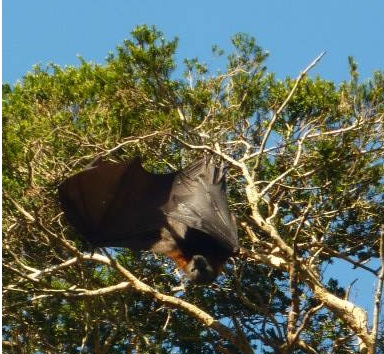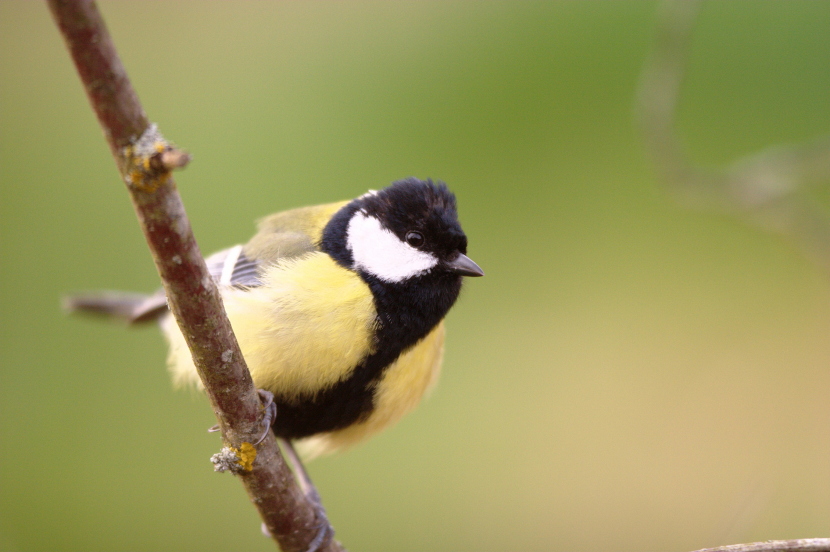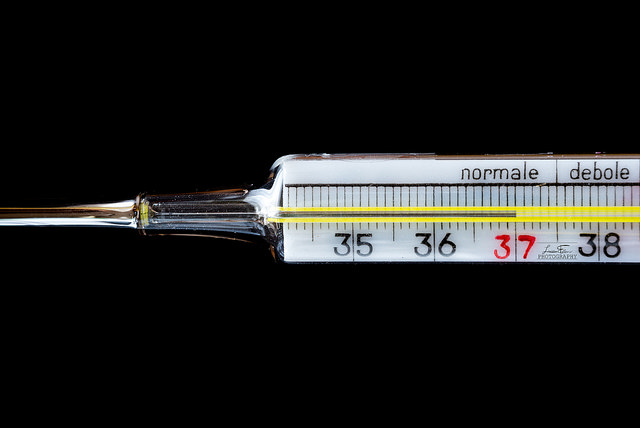Coronavirus
Article curated by Rowena Fletcher-Wood
The disease COVID-19, caused by the SARS-CoV-2 virus commonly known as coronavirus, is zoonotic: it came from animals and jumped into humans. But when, and from what animal? How old is the virus, and why are there huge discrepancies in the scientific findings?
Origin
Studies of the COVID-19 and coronavirus spread have concluded that there was no one single patient zero in the UK: over 1,356 strains entered the country and replicated, as demonstrated by 20,000 viral samples, which assembled a family tree for the virus, showing ~34% of cases from Spain, 29% from France, 14% from Italy and <0.1% from China. In collaboration with international travel data, researchers have concluded that infection rate peaked around 15th March, prompting criticism over decisions to keep international travel open in February and March.





Age
Under the current pandemic, advanced genome sequencing techniques have been used to probe the coronavirus and its cousin diseases[1]. These viruses are common and most diverse in bats and birds[2][3][4], and as such have been tied to the coevolution and divergence of these species in the carboniferous period, over 300 million years ago. Indeed, one genetically-related alphacoronavirus has been found in different mouse-eared bats on different continents which are non migratory. However, until recently, molecular clock dating analyses aged them at just 10,000 years old – mere evolutionary babies. The strains found in the mouse-eared bats are thought to be just 200-4,400 years ago…[2][4] A clearly incompatible finding! As such, researchers have been updating standard nucleotide models to try to account for this discrepancy, and think that strong “purifying” selection may have led to a massive underestimate[1]. A new method that models varying strength of natural selection over time was tried out in coronaviruses, and dates them to at least tens of millions of years ago – when their natural hosts (bats and birds) started diversifying[2][3][4]. This would give the coronavirus a history similar to that of filoviruses like Ebola[5][6], or herpesviruses[7][8], amongst others. The finding has important implications for the fight against coronavirus, as it’s possible that if bats and birds coevolved alongside coronaviruses, they developed metabolic and immunological tolerances that we might identify and use to support disease treatment and eradication[1][9][10].



Transmission
A new study has reported the vertical transmission of the coronavirus COVID-19 from mother to unborn baby during the second trimester of pregnancy[11]. The finding opens new questions about how the disease is transferred from person to person, and how it can overcome the placenta. Chromatography and mass spectrometry were used for diagnosis in the tiny foetus, demonstrating the application of a new analytical technique[12]. Abnormalities were found in the foetus, and placental insufficiency diagnosed. It’s not clear whether the virus took advantage of the placental insufficiency, or caused it, but no other cause was identified.


 2
2An unequal illness
How long does coronavirus last? For most, it’s about two weeks, but some have had the illness for 60, 70, or 80 days, and counting. They suffer symptoms including fatigue, loss of concentration, coughs, fevers, and difficulty breathing. Hallucinations, delirium, and short-term memory loss have also been reported. The symptoms may improve or worsen, and the only thing that’s constant is that the ill-effects are ever-changing. After months of suffering, some have borne out the illness, but for others it has shown no signs of abating – and we’ve no idea how long it might last. Friends, family, and even doctors have suggested ongoing symptoms are in the sufferer’s head – because they’re unable to process a prolonged condition. These dismissals disproportionately affect women. To make this worse, long-haul sufferers test negative for the virus – it’s gone. Scientists have suggested that the lingering effects are not a direct consequence of the virus, but likely due to the host’s immune system in overdrive – but they don’t know. Long-haulers might still carry the virus (or inactive genetic fragments) in a “reservoir organ”. Supporting the immune system hypothesis is the finding that people taking tamsulosin for urinary retention have better odds against coronavirus, which works by blocking inflammatory cytokines in the body.The journey through long-haul coronavirus has been well-documented by Paul Garner, professor of infectious diseases at Liverpool School of Tropical Medicine.



The variability of coronavirus symptoms is confusing, and suggests it may be more to do with the host than the virus. Some think the virus directly attacks organs, whilst others think it is solely due to immune system overstimulation. The Chinese detection of the protein “D-dimer” may be indicative of those at highest risk from coronavirus: the protein has been found at concentrations four times higher than usual in hosts who later die[13]. Tests have been developed to identify elevated concentrations.


 2
2

We don’t know how many people who get the virus die – somewhere between 0.1 and 15% – but even more mysterious is who, and why. Estimates of coronavirus mortalities suggest that black deaths are 3.57 times higher than white deaths. In Switzerland, French speakers are 1.6 times more likely to die than German speakers, and Italian speakers are 2.4 times more likely to die. There have always been racial disparities in epidemics[14], and this alone tells us that biologic or behavioural differences cannot explain the trend. Sociologists speculate that this is likely due to a host of other factors, including socioeconomic status, food security, housing conditions, access to healthcare, previous health status, family size, and whether you live in a city or the countryside. The Harvard Public Health Disparities Geocoding Project is now attempting to unravel, these factors by paralleling coronavirus data with Census data.


Where age, and the presence of long-term conditions such as cardiovascular disease or diabetes cannot explain severity in COVID-19 symptoms, it appears a genetic mutation may be responsible that weakens the immune systems of younger, otherwise healthy men[15]. In a study of 156 male COVID-19 patients below 60, those with a TLR7 gene were found to suffer more from the disease. The mutation happens on an X chromosome, so men, who only have one, are left with no back up if it occurs, whereas women are likely to have one mutated X and one not mutated X. The affected gene is important in immune signalling and, it turns out, makes sufferers less able to detect the SARS-CoV-2 coronavirus. This means, if they get the disease, it could advance further before their body launches its attack, making the condition more severe. This discovery could be the first step in a series of discoveries that help us understand how the mysterious virus operates seemingly randomly.


Smell
At first, scientists were bemused by the COVID-19 coronavirus' effect on sense of smell: whilst many people are asymptomatic, many experience loss or disturbed sense of smell that lasts for months after the illness, before finally returning to normal. And it's not the only illness that can upset our sense of smell. We’re still not quite sure why. However, recent work has found that the coronavirus latches onto two proteins (ACE2 and TMPRSS2) common in the nose[16]. They help transport odour information through mucus, and so it’s thought that when coronavirus binds, it damages the supporting structure around the neuron – the neuron itself is undamaged, and that’s why our sense of smell recovers. Scientists continue to investigate, and are hoping that the findings will also teach us more about anosmia.


 3
3Vaccines
Vaccine hesitants may be surprised, but ‘flu vaccine recipients from last season have been shown to be much less likely to contract COVID-19, and much less likely to suffer complications, or likely to suffer few complications, if they do. This is in contrast to the fear that it might cause coronavirus (no evidence) or make you more vulnerable (now disproven).
The study looked at 27,000 people in March-July 2020, and variables including ethnicity, race, gender, age, BMI, smoking status and comorbidity were controlled for[17].
We don’t know why this works, but it remains an interesting finding! Longitudinal studies have been born off the back of it.


 2
2
As we vaccinate people against coronavirus, hope is on the horizon – or is it? New strains have already emerged, and when a virus evolves, one thing it likes to change is its epitope, or molecular shape. Vaccines normally work by pretending to be a virus or bacterium that the body then fights off and learns to fight off next time. It does this by creating an antibody that “fits” the infectious agent and can either destroy it or swallow it up. This means that vaccines learn the shape but not identity of an agent. Whilst we’re able to determine whether something is dangerous or not or if it’s another version of something we’ve encountered before, our immune systems aren’t if the shape has changed. At the moment, we’re not sure how to solve this, and we can only hope we can vaccinate people quickly enough to limit the spread and thus evolutionary opportunities for the virus.


 3
3When infected, our cells alert neighboring cells to stimulate antiviral defences. However, many sneaky viruses such as the SARS-CoV-2 coronavirus mimic host RNA to “silence” these distress calls, and do so by using certain proteins. Coronavirus uses “nsp14”, a protein key for virus reproduction.
Now researchers are looking into how to “interfere with” this protein to bypass the silencing system, and have been able to shut it off in some cases, helping the body find and fight the virus sooner[18]. They used computer simulations to do so, along with biochemical characterisation.


 3
3Oral vaccines are being explored for coronavirus and have been promised as early as June. This would be administered in a tablet form, could be kept at room temperature, shipped more easily, and administered at home. But is it possible? Researchers have been looking into edible vaccines for a while, in particular, by genetically engineering plants such as potatoes to produce conjugate vaccines – safe, disabled subunits from pathogenic diseases – and bacterial proteins that stimulate a big immune response aimed at serving people in developing countries. However, this remains challenging; we don’t normally exhibit immune responses against food: if we could provoke one, how would that impact the rest of our diet and our normal reactions to infectious agents?
Tests have not yet been conducted in humans.
Learn more about /vaccines.


 3
3Aftermath
What does an antibody test for coronavirus tell us? At the moment, we don’t know. False positives are sufficiently common that if enough people test who haven’t had the disease, even a test that is correct over 90% of the time can identify more people incorrectly than correctly. The challenge of measuring the trail left by coronavirus continues.


The aftermath of coronavirus – just like so many other viruses – is poorly understood, and long-lasting symptoms are rarely mentioned: but they do exist. Survivors may be left with disabilities, including scarring in the lungs[19], or ME/CFS (myalgic encephalomyelitis/chronic fatigue syndrome).


This article was written by the Things We Don’t Know editorial team, with contributions from Rowena Fletcher-Wood.
This article was first published on 2020-06-29 and was last updated on 2021-04-14.
References
why don’t all references have links?
[1] Wertheim, Joel O., et al. A case for the ancient origin of coronaviruses. Journal of Virology 87.12 (2013): 7039-7045. doi: 10.1128/JVI.03273-12
[2] Woo, Patrick CY, et al. Discovery of seven novel Mammalian and avian coronaviruses in the genus deltacoronavirus supports bat coronaviruses as the gene source of alphacoronavirus and betacoronavirus and avian coronaviruses as the gene source of gammacoronavirus and deltacoronavirus. Journal of virology 86.7 (2012): 3995-4008. doi:10.1128/JVI.06540-11
[3] Chu, Daniel KW, et al. Avian coronavirus in wild aquatic birds. Journal of virology 85.23 (2011): 12815-12820. doi:10.1128/JVI.05838-11
[4] Vijaykrishna, D., et al. Evolutionary insights into the ecology of coronaviruses. Journal of virology 81.8 (2007): 4012-4020. doi:10.1128/JVI.02605-06
[5] Belyi, Vladimir A., Arnold J. Levine, and Anna Marie Skalka. Unexpected inheritance: multiple integrations of ancient bornavirus and ebolavirus/marburgvirus sequences in vertebrate genomes. PLoS pathogens 6.7 (2010). doi: 10.1371/journal.ppat.1001030
[6] Taylor, Derek J., Robert W. Leach, and Jeremy Bruenn. Filoviruses are ancient and integrated into mammalian genomes. BMC evolutionary biology 10.1 (2010): 193. doi: 10.1186/1471-2148-10-193
[7] McGeoch, Duncan J., and Simon Cook. Molecular phylogeny of the alphaherpesvirinae subfamily and a proposed evolutionary timescale. Journal of molecular biology 238.1 (1994): 9-22. doi: 10.1006/jmbi.1994.1264
[8] McGeoch, Duncan J., et al. Molecular phylogeny and evolutionary timescale for the family of mammalian herpesviruses. Journal of molecular biology 247.3 (1995): 443-458. doi: 10.1006/jmbi.1995.0152
[9] Wang, Lin-Fa, Peter J. Walker, and Leo LM Poon. Mass extinctions, biodiversity and mitochondrial function: are bats ‘special’as reservoirs for emerging viruses? Current opinion in virology 1.6 (2011): 649-657. doi: 10.1016/j.coviro.2011.10.013
[10] Zhang, Guojie, et al. Comparative analysis of bat genomes provides insight into the evolution of flight and immunity. Science 339.6118 (2013): 456-460. doi: 10.1126/science.1230835
[11] Sukhikh G, Petrova U, Prikhodko A, et al. Vertical transmission of SARS-CoV-2 in second trimester associated with severe neonatal pathology. Viruses. 2021;13(3). doi:10.3390/v13030447.
[12] Nikolaev EN, Indeykina MI, Brzhozovskiy AG, et al. Mass-spectrometric detection of SARS-CoV-2 virus in scrapings of the epithelium of the nasopharynx of infected patients via nucleocapsid n protein. J Proteome Res. 2020;19(11):4393-4397. doi:10.1021/acs.jproteome.0c00412.
[13] Zhang, Litao, et al. "D‐dimer levels on admission to predict in‐hospital mortality in patients with Covid‐19." Journal of Thrombosis and Haemostasis 18.6 (2020): 1324-1329. doi: 10.1111/jth.14859.
[14] Chowkwanyun, Merlin, and Adolph L. Reed Jr. Racial health disparities and Covid-19—caution and context. New England Journal of Medicine (2020). doi: 10.1056/NEJMp2012910.
[15] Fallerini C, Daga S, Mantovani S, et al. Association of Toll-like receptor 7 variants with life-threatening COVID-19 disease in males: findings from a nested case-control study. eLife. 2021;10:e67569. doi: 10.7554/eLife.67569.
[16] Brann, David H., et al. Non-neuronal expression of SARS-CoV-2 entry genes in the olfaory system suggests mechanisms underlying COVID-19-associated anosmia. Science Advances (2020): eabc5801. doi: 10.1126/sciadv.abc5801.
[17] Conlon A, Ashur C, Washer L, Eagle KA, Bowman MAH. Impact of the influenza vaccine on COVID-19 infection rates and severity. Am. J. Infect. Control. 2021;0(0). doi: 10.1016/j.ajic.2021.02.012.
[18] Saramago M, Bárria C, Costa VG, et al. New targets for drug design: Importance of nsp14/nsp10 complex formation for the 3’-5’ exoribonucleolytic activity on SARS-CoV-2. FEBS J. 2021. doi: 10.1111/febs.15815.
[19] Wang, Yuhui, et al. Temporal changes of CT findings in 90 patients with COVID-19 pneumonia: a longitudinal study. Radiology (2020): 200843. doi: 10.1148/radiol.2020200843
Blog posts about coronavirus


Recent coronavirus News
Get customised news updates on your homepage by subscribing to articles













